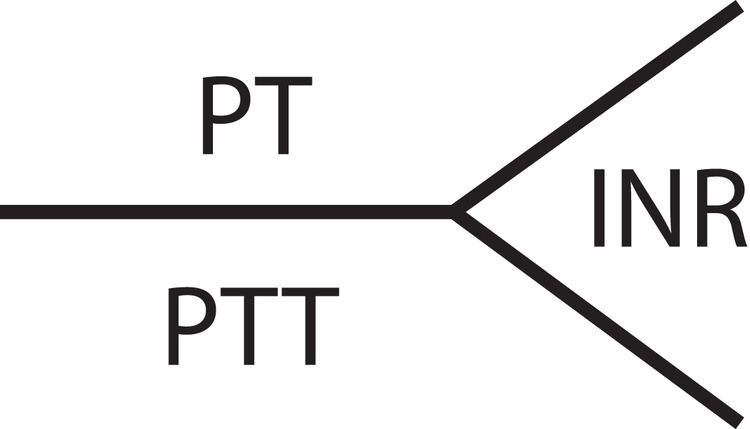MeSH D010314 | ||
 | ||
The partial thromboplastin time (PTT) or activated partial thromboplastin time (aPTT or APTT) is a medical test that characterizes blood coagulation, also known as clotting. A historic name for this measure is the Kaolin cephalin clotting time (KccT). Apart from detecting abnormalities in blood clotting, partial thromboplastin time is also used to monitor the treatment effects with heparin, a widely prescribed drug that reduces blood's tendency to clot.
Contents
Partial thromboplastin time (PTT) measures the overall speed at which blood clots by means of two consecutive series of biochemical reactions known as the "intrinsic" (now referred to as the contact activation pathway) and common coagulation pathways.
The partial thromboplastin time (PTT) is used in conjunction with another measure of how quickly blood clotting takes place called the prothrombin time (PT). The prothrombin time measures the speed of clotting by means of the extrinsic pathway (also known as the tissue factor pathway).
Methodology
Partial thromboplastin time is typically analyzed by a medical technologist or a laboratory technician on an automated instrument at 37 °C (as a nominal approximation of normal human body temperature). The test is termed "partial" due to the absence of tissue factor from the reaction mixture.
Interpretation
The typical reference range is between 30 seconds and 50 s (depending on laboratory). Shortening of the PTT is considered to have little clinical relevance, but some research indicates that it might increase risk of thromboembolism. Normal PTT times require the presence of the following coagulation factors: I, II, V, VIII, IX, X, XI and XII. Notably, deficiencies in factors VII or XIII will not be detected with the PTT test.
Prolonged APTT may indicate:
To distinguish the above causes, mixing tests are performed, in which the patient's plasma is mixed (initially at a 50:50 dilution) with normal plasma. If the abnormality does not disappear, the sample is said to contain an "inhibitor" (either heparin, antiphospholipid antibodies or coagulation factor specific inhibitors), while if it does disappear a factor deficiency is more likely. Deficiencies of factors VIII, IX, XI and XII and rarely von Willebrand factor (if causing a low factor VIII level) may lead to a prolonged aPTT correcting on mixing studies.
History
The aPTT was first described in 1953 by researchers at the University of North Carolina at Chapel Hill explaining the Carolina blue Vacutainer tube top color.
